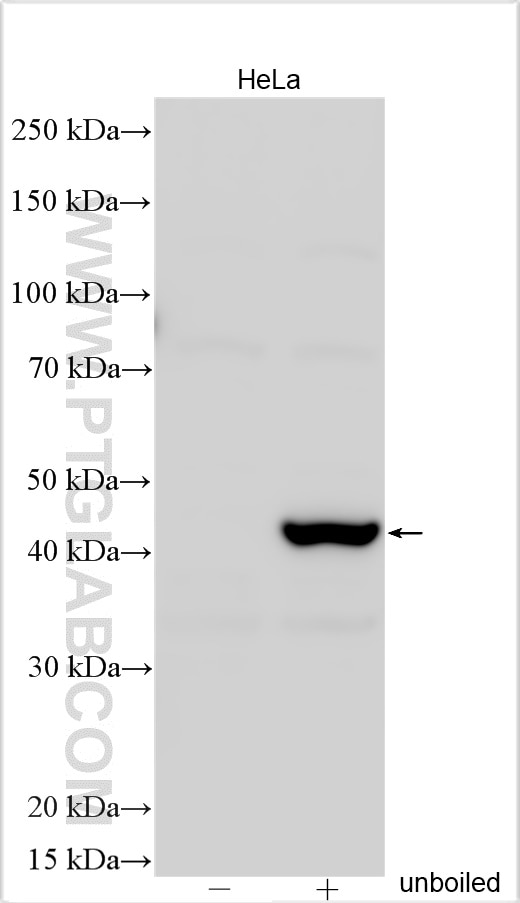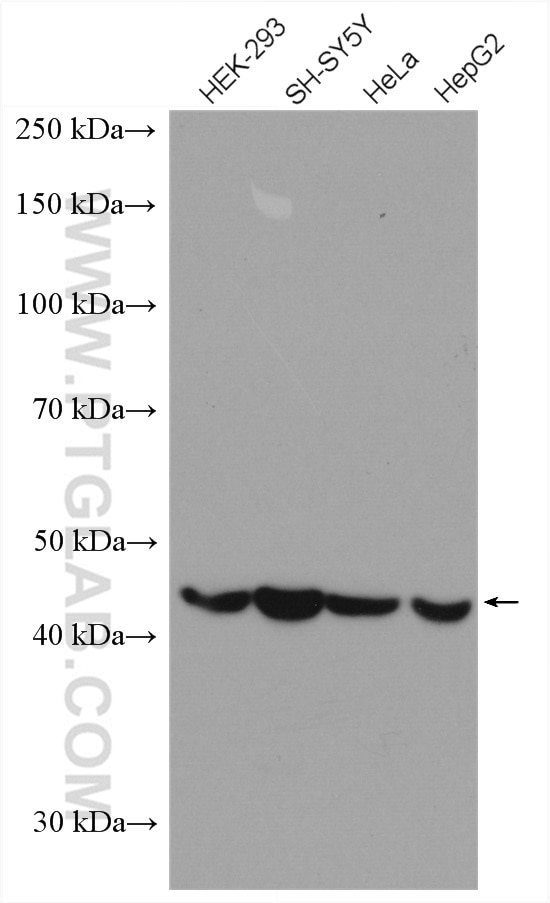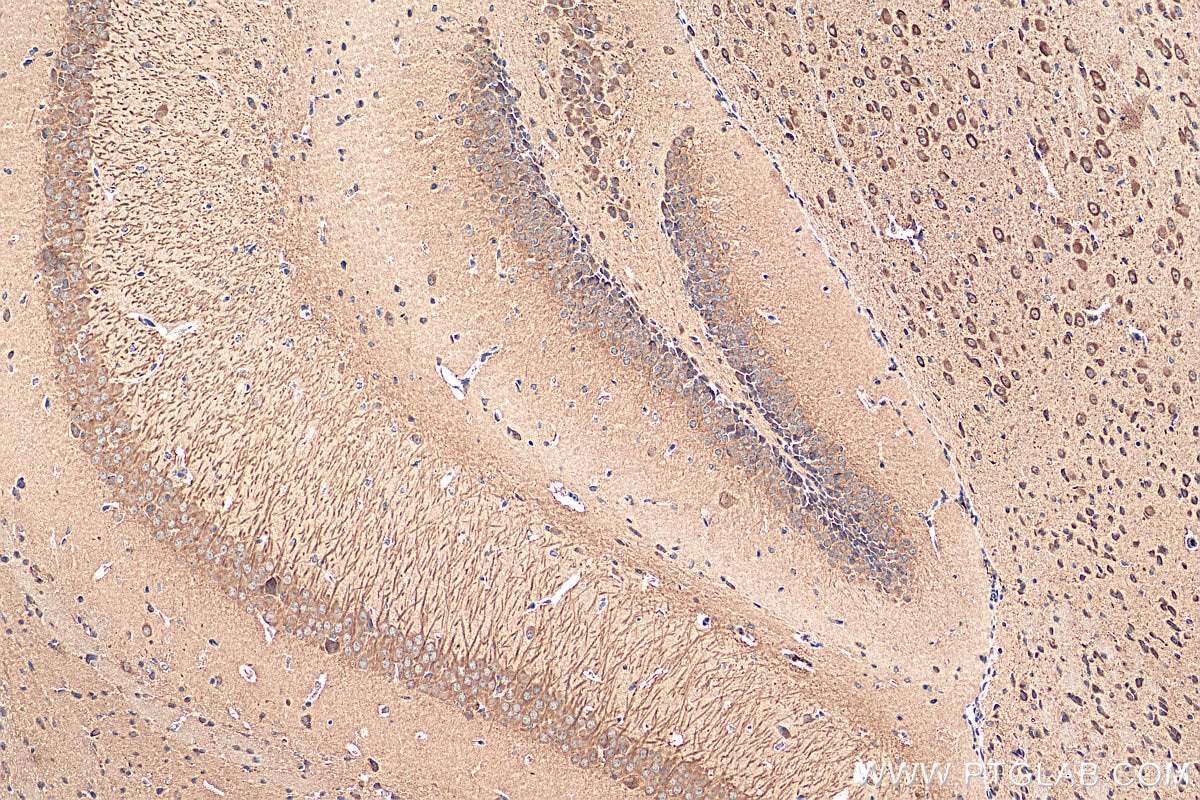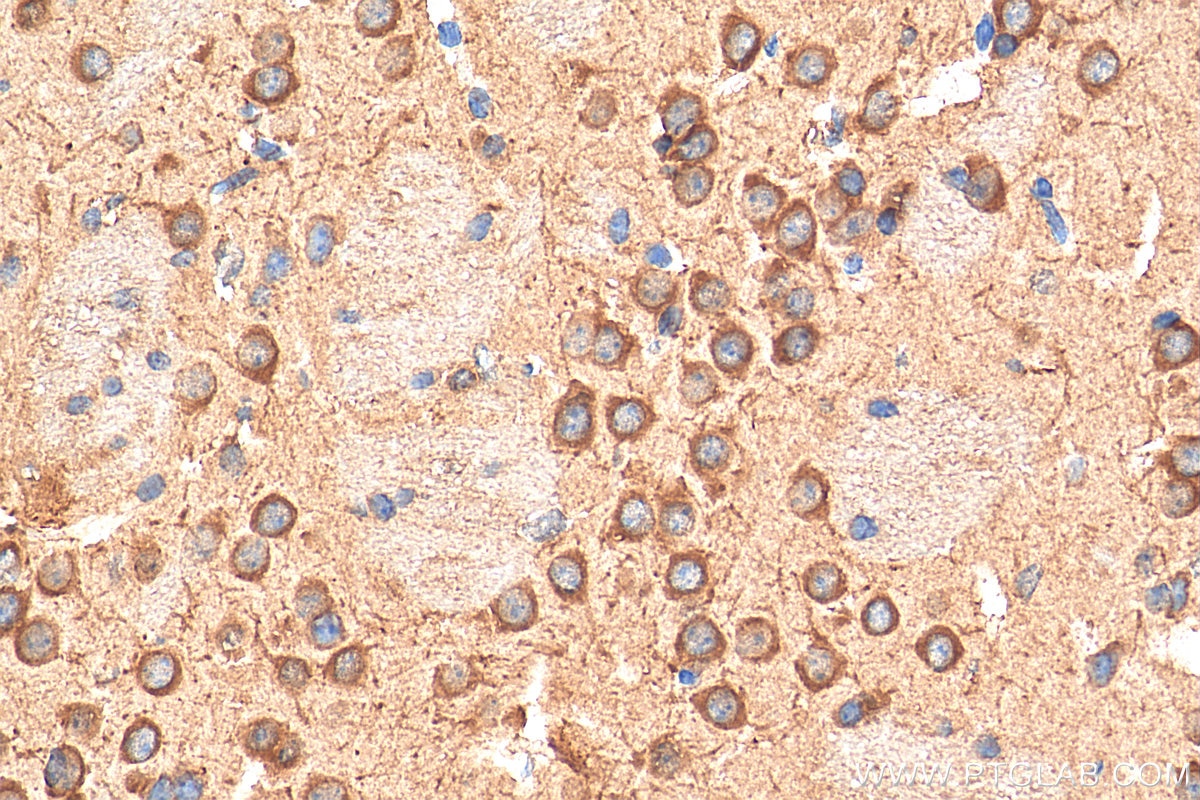- Phare
- Validé par KD/KO
Anticorps Polyclonal de lapin anti-TMEM175
TMEM175 Polyclonal Antibody for WB, IHC, ELISA
Hôte / Isotype
Lapin / IgG
Réactivité testée
Humain, rat, souris et plus (1)
Applications
WB, IHC, IF, IP, CoIP, ELISA
Conjugaison
Non conjugué
N° de cat : 19925-1-AP
Synonymes
Galerie de données de validation
Applications testées
| Résultats positifs en WB | cellules HeLa, cellules HEK-293, cellules HepG2, cellules SH-SY5Y |
| Résultats positifs en IHC | tissu cérébral de souris, il est suggéré de démasquer l'antigène avec un tampon de TE buffer pH 9.0; (*) À défaut, 'le démasquage de l'antigène peut être 'effectué avec un tampon citrate pH 6,0. |
Dilution recommandée
| Application | Dilution |
|---|---|
| Western Blot (WB) | WB : 1:500-1:3000 |
| Immunohistochimie (IHC) | IHC : 1:50-1:500 |
| It is recommended that this reagent should be titrated in each testing system to obtain optimal results. | |
| Sample-dependent, check data in validation data gallery | |
Applications publiées
| KD/KO | See 4 publications below |
| WB | See 18 publications below |
| IF | See 2 publications below |
| IP | See 1 publications below |
| CoIP | See 1 publications below |
Informations sur le produit
19925-1-AP cible TMEM175 dans les applications de WB, IHC, IF, IP, CoIP, ELISA et montre une réactivité avec des échantillons Humain, rat, souris
| Réactivité | Humain, rat, souris |
| Réactivité citée | rat, Humain, singe, souris |
| Hôte / Isotype | Lapin / IgG |
| Clonalité | Polyclonal |
| Type | Anticorps |
| Immunogène | TMEM175 Protéine recombinante Ag13890 |
| Nom complet | transmembrane protein 175 |
| Masse moléculaire calculée | 504 aa, 56 kDa |
| Poids moléculaire observé | 41-45 kDa, 54-60 kDa |
| Numéro d’acquisition GenBank | BC005158 |
| Symbole du gène | TMEM175 |
| Identification du gène (NCBI) | 84286 |
| Conjugaison | Non conjugué |
| Forme | Liquide |
| Méthode de purification | Purification par affinité contre l'antigène |
| Tampon de stockage | PBS with 0.02% sodium azide and 50% glycerol |
| Conditions de stockage | Stocker à -20°C. Stable pendant un an après l'expédition. L'aliquotage n'est pas nécessaire pour le stockage à -20oC Les 20ul contiennent 0,1% de BSA. |
Informations générales
TMEM175 has two repeats of 6-transmembrane-spanning segments and has no GYG K+ channel sequence signature-containing, pore-forming P loop. Lysosomes lacking TMEM175 exhibit no K+conductance, have a markedly depolarized ΔΨ and little sensitivity to changes in [K+], and have compromised luminal pH stability and abnormal fusion with autophagosomes during autophagy. TMEM175 comprises a K+ channel that underlies the molecular mechanism of lysosomal K+ permeability. It has two isoforms with MW 41-45 kDa and 54-60 kDa. For optimal WB detection with this antibody, we recommend avoiding boiling the sample after lysis.
Protocole
| Product Specific Protocols | |
|---|---|
| WB protocol for TMEM175 antibody 19925-1-AP | Download protocol |
| IHC protocol for TMEM175 antibody 19925-1-AP | Download protocol |
| Standard Protocols | |
|---|---|
| Click here to view our Standard Protocols |
Publications
| Species | Application | Title |
|---|---|---|
Nature A growth-factor-activated lysosomal K+ channel regulates Parkinson's pathology.
| ||
Ann Neurol Genetic, Structural, and Functional Evidence Link TMEM175 to Synucleinopathies. | ||
Proc Natl Acad Sci U S A TMEM175 deficiency impairs lysosomal and mitochondrial function and increases α-synuclein aggregation.
| ||
Mol Med Modulation of anti-cardiac fibrosis immune responses by changing M2 macrophages into M1 macrophages | ||
Hum Mol Genet Mitochondrial clearance and maturation of autophagosomes are compromised in LRRK2 G2019S familial Parkinson's disease patient fibroblasts. |





